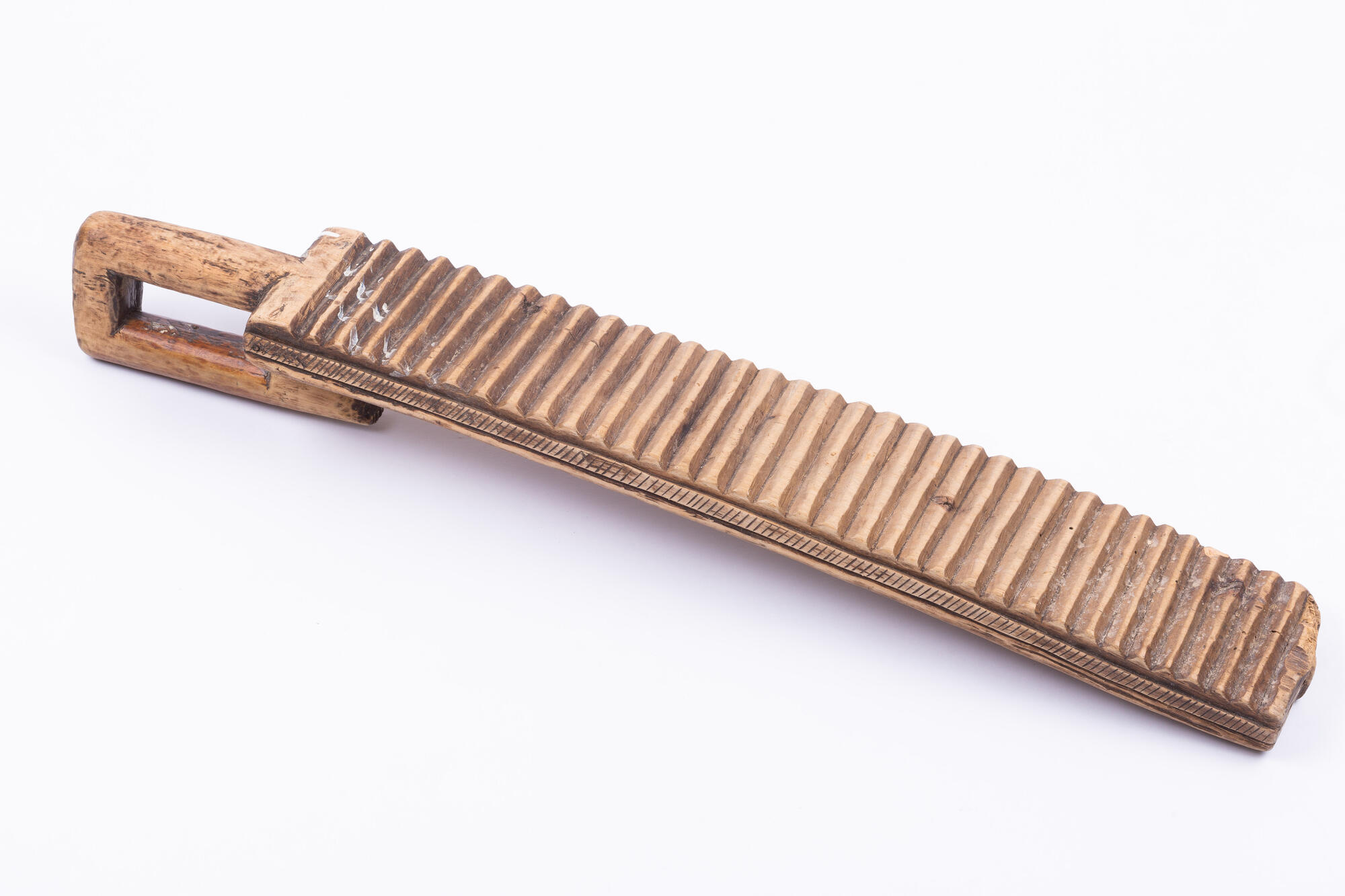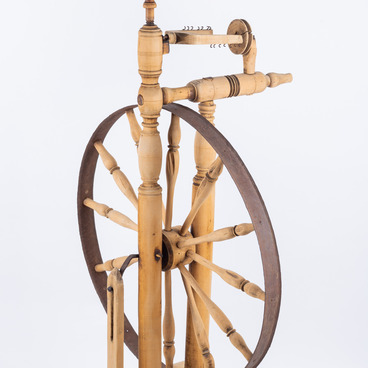Rubel is an old Russian word for a wooden board with crosswise grooves, which was commonly used for washing and ‘ironing’ clothes. A rubel was usually flat, with a handle at one end. The handle was often left hollow. Inside, there were little balls or dried peas, which rolled about with a pleasant sound. Rubels were crafted out of tree species with hard, resilient timber, like maple, birth, beech, rowan, or oak.
The butt ends of the rubel were sawn as clean as possible, while its corners were filed down. The board’s face was covered with special rounded crosswise grooves, while its back was left smooth. Sometimes, rubels were decorated with dainty carvings.
The rubel rollers were made with a special cutting technique that had to be followed with immaculate precision. Parallel stripes were traced once in every 15 mm; then 7 mm cuts were made along them. Using a chisel, the craftsmen deepened and turned them into grooves between the rollers. Then, they clipped the excess wood off with a skew knife in the direction of the cut, and rounded off the sharp edges.
In the past, skilled housewives found many uses for a rubel. After soaking laundry in boiling water over an oven, they pounded it down and then wrapped it over a roller and applied a rubel. The process returned a pristine snowy colour even to the laundry that had not gotten washed properly. This inspired the famous Russian proverb, “If you can”t wash it, roll it, ” meaning “Do something come what may.”
The “ironing” process was fairly similar. While still damp, the laundry was twisted into a lump over the roller. The rubel was placed on top, with the grooves facing down. Then, the person doing the laundry would pass it over the roller several times, pressing down with force.
Aside from being a useful household tool, a rubel could also be transformed into a musical instrument. Unlike the common household variety, the musical rubel boards were hollow inside. In order to play a rubel, you had to hold its handle with one hand and pass a wooden spoon or a special stick along the grooves with the other. The loud, rumbling noise resonated through the rubel rather than passing end to end. The crackle of a rubel was an excellent way of emphasising race notes or short arpeggios.



